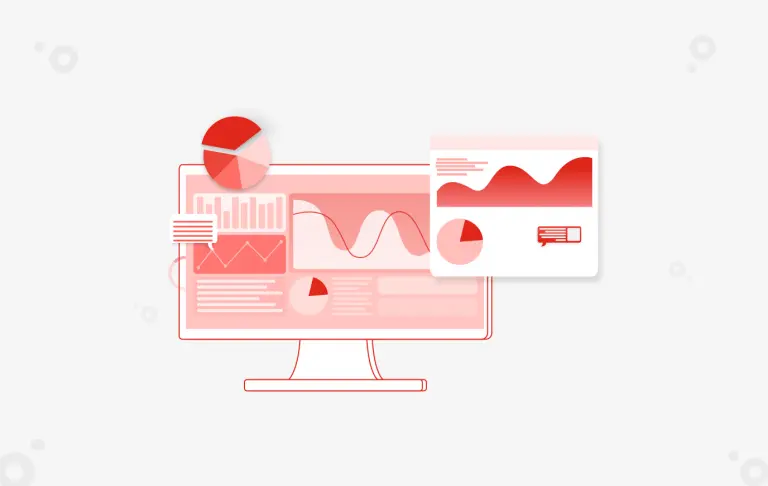The speed with which technology is advancing is prompting organizations to evaluate and advance their Data Warehouse strategy, and changes how they are planning and building their Business Intelligence (BI) solutions. The advancement is evolving into a BI trend of ‘Self-Service’ which enables business users to access their corporate data, discover trends and make informed decisions by having a controlled access to the data.
Self-Service Business Intelligence is defined by Gartner as “end users designing and deploying their own reports and analyses within an approved and supported architecture and tools portfolio.”
This evolution of BI, aided by newer analytical tools facilitating self-service, has helped redraw the traditional crossover between IT and Business teams. A Self-Service BI solution is designed with clearly defined roles: the IT team is responsible for building a service platform (tools and data); and business users analyze and consume data as per their reporting requirement.
What to Explore
Planning and Building a Self-Service Platform
When planning a Self-Service BI solution, organizations need to clearly define their expectations from the platform. Setup of the platform requires close collaboration between IT and Business teams. Once the platform is built, the business users take over and accomplish the majority of their analysis, discovery and reporting using the analytical toolset integrated into the platform without having to depend on their IT teams.
BI Strategy
Self-Service BI is a vision of BI enablement, therefore, the journey should start with defining the BI requirements aligned with the business goals and objectives of your organization.
Identify Users and Their Needs
One size does not fit all when it comes to defining self-service, so it is imperative to identify the variety of users and their specific requirements. The user base can be broadly categorized as ‘Report Consumers,’ ‘Functional Users’ and ‘Power Users.’
The responsibilities of the users may vary based on organizational requirements and individual user capability:
- Report Consumers consume the batch or canned reports created by BI developers.
- Functional Users use the parameterized report template or interactive dashboards for their specific analysis and reporting requirements.
- Power Users create and publish reports for internal and external consumers, trend analysis, data discovery and advanced analytics. They are the business domain experts and collaborate with their IT teams to enhance and maintain the self-service platform.
Data Provisioning – Building the Data Lake
There are several key components required to build the data lake. These components include:
- Identify data sources in line with the business requirement.
- Define the data model and storage layers (primarily raw, processed, sandbox and presentation).
- Define the extract, transform and load (ETL) strategy for each layer.
- Ensure data integrity via ETL checkpoints, business-driven quality checks and database constraints.
Controlled Environment
Since business users will be accessing data in a more direct way than in traditional BI, access controls need to be established based on user roles to ensure a secure environment. Access controls include:
- Business users need to have Read Only access to Raw, Processed and Presentation layer
- Read/Write access to the sandbox layer
- Sandbox setup (categorization by Business vertical, Demography, Users)
- Role-based access to sandbox and data (residing in the Data Lake)
- The sandbox layer supports data manipulation and discovery. Power users are able to copy data from any of the read-only layers based on defined access into their designated sandbox environment.
Selecting the Self-Service Toolset
The organizational goal, BI strategy and business user requirements drive the selection of the toolset. The following parameters can help the tool evaluation aligned with the business requirement:
- Support for Data preparation
- Prompts for forming Query
- Support for Real-time analytics
- Support for Predictive Analytics
- Support for Mobile versions
- Ability to build rich intuitive Dashboards
- Support for Scheduling and Distribution
- Social Media Analytics
Defining Success Criteria for Self-Service BI
Collaboration between the IT and Business teams is the key to building a robust and sustainable Self-Service BI platform. The following factors will influence the ROI and success of the self-service platform:
Alignment and Adaptability
IT teams should be responsible for maintaining, aligning, and adapting the platform to variations in usage or querying patterns in collaboration with the business users.
Scalable Platform
There should be a mechanism for continuous assessment, evaluation, and adoption of newer analytical tools to facilitate advanced analytics (real-time, predictive). The framework should support easy integration and adoption of newer tools as needed.
Minimal Handoffs between IT and Business Teams
Business users should be able to create their reports and run a majority of their analysis independently without having a dependency on their IT teams. This ensures that the experts in a business domain have the capability of running their own analysis and creating/generating their own reports. IT teams would be primarily be involved in facilitating, maintaining, and enhancing the self-service platform.
Feature Rich Toolset Support
The selection of the right toolset tuned to the business user requirement is key to enhancing the self-service experience. The ability to analyze multi-dimensional data and create rich interactive and intuitive dashboards for executive consumption empowers the Power Users to be creative and innovative.
Extensibility
A provision for building and maintaining ad hoc custom utilities will enhance the capability of the platform. In addition to building reports, the business users should have access to either use a pre-built utility or create a custom process to pull data (external or from the data lake) into their sandbox for analysis. This action would be controlled via the data access roles and associated permissions.
Self-Service is No Longer a Luxury but a Business Necessity
More and more organizations are realizing the benefits and ROI associated with enabling a Self-Service BI platform, thereby empowering the business users (domain experts) to analyze, query, design, and share their own reports. With clearly defined roles between IT and Business, the benefits are quite evident and visible in the form of improved time to production, overall cost of ownership and goal driven development aligned to the business strategy.
Self-Service requirements will change with time (changing user base and business requirements). The key to sustaining an effective self-service capability is continuous assessment, collaboration (IT and Business) and adoption of new technology tools and trends.
Whether your business needs a traditional BI or Self-Service solution, check out our blog post on 5 Keys to Nailing a BI Implementation for ensuring that business users can access the information they need to support growth.
Let’s discuss how we can empower your business users through self-service BI: Contact us
You Might Also Like


Data Security
Implementing Fine-Grained Data Access Control: A Complete Guide to GCP Column-Level Policy Tags
Learn More









